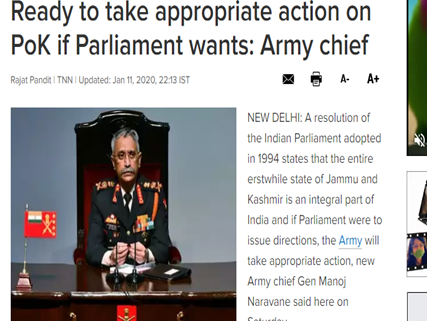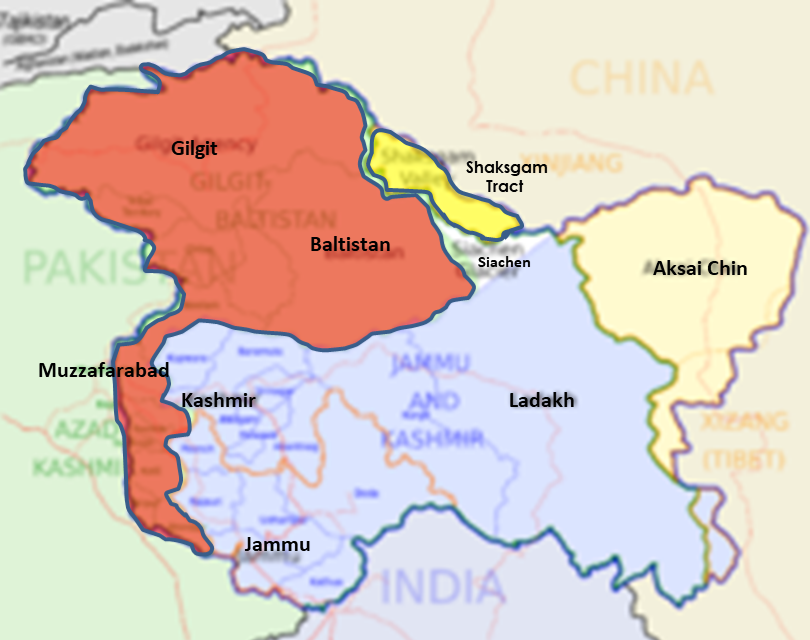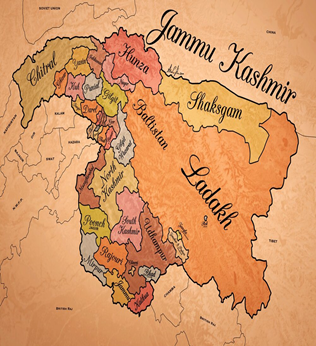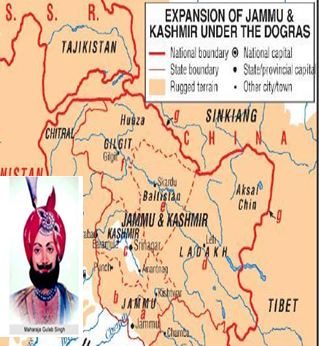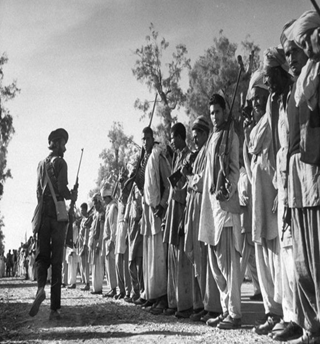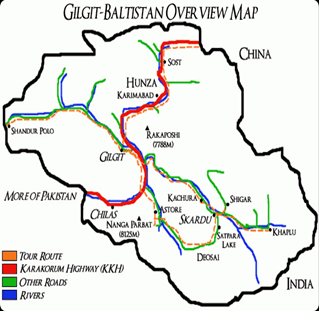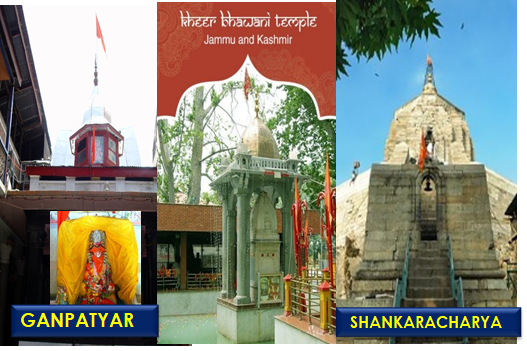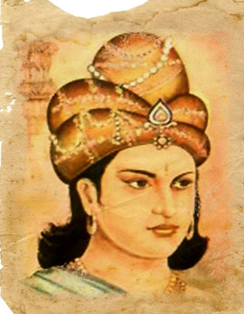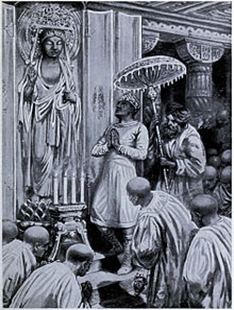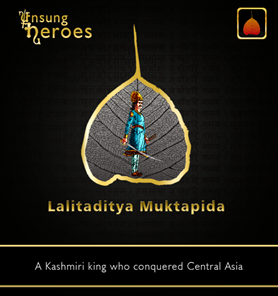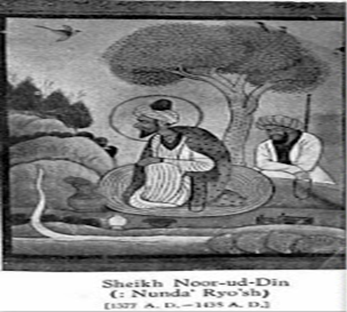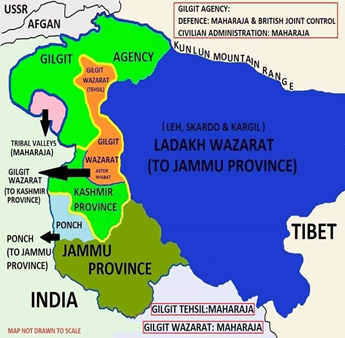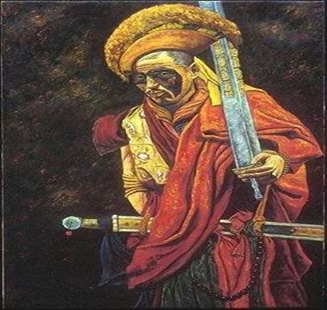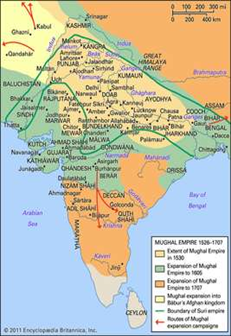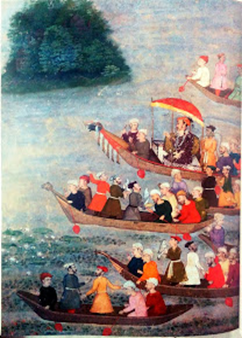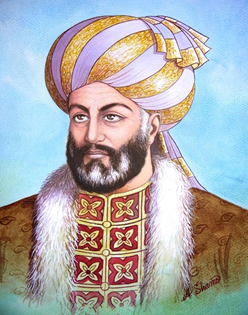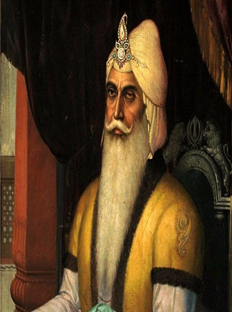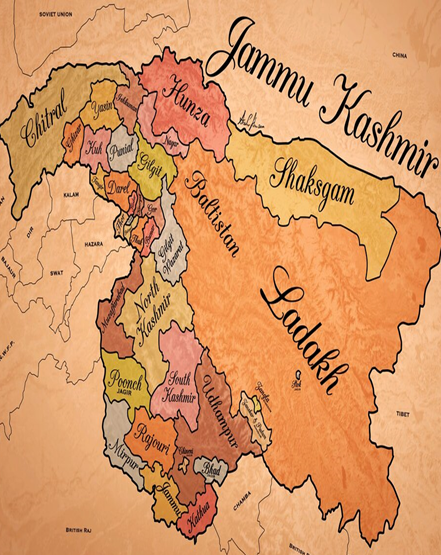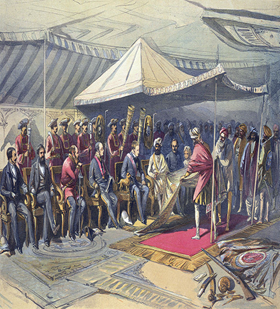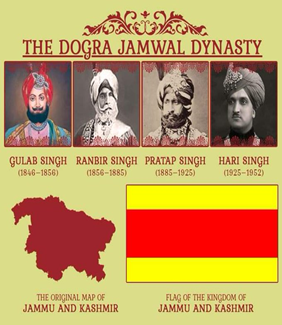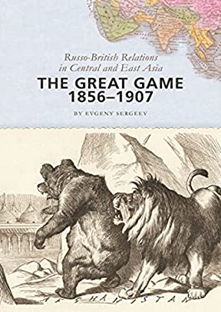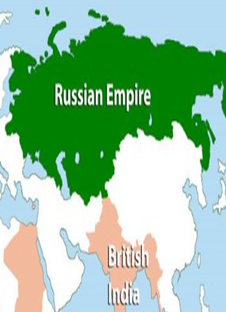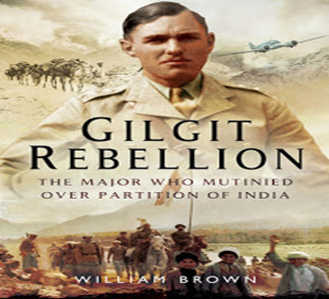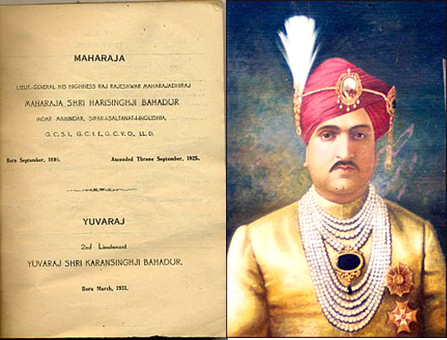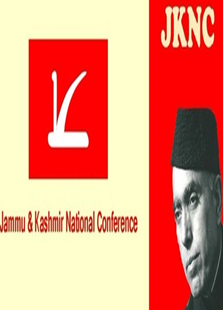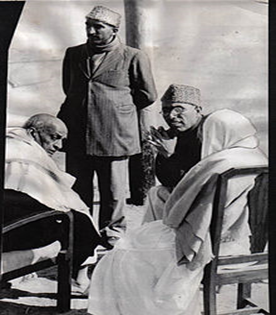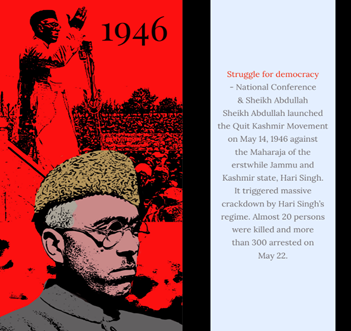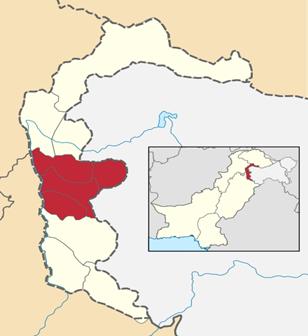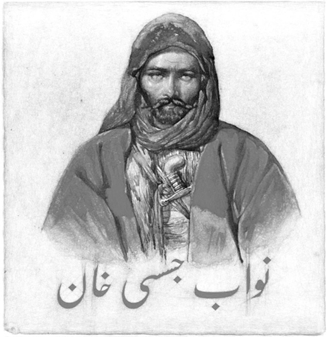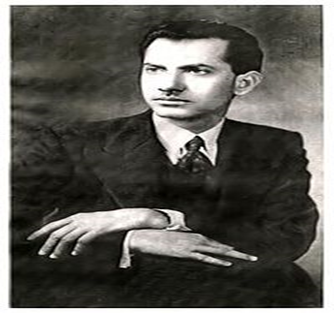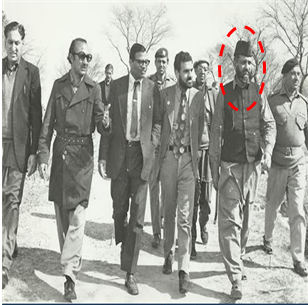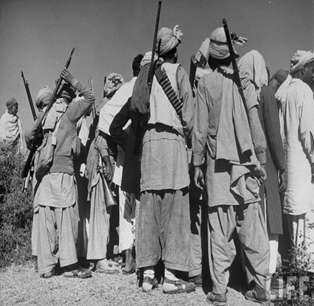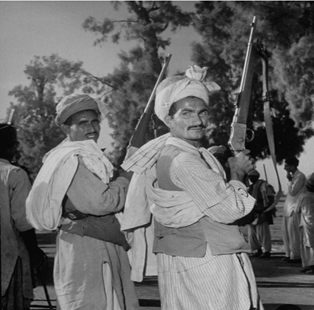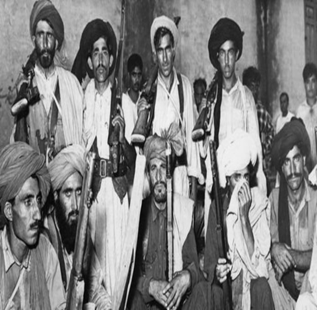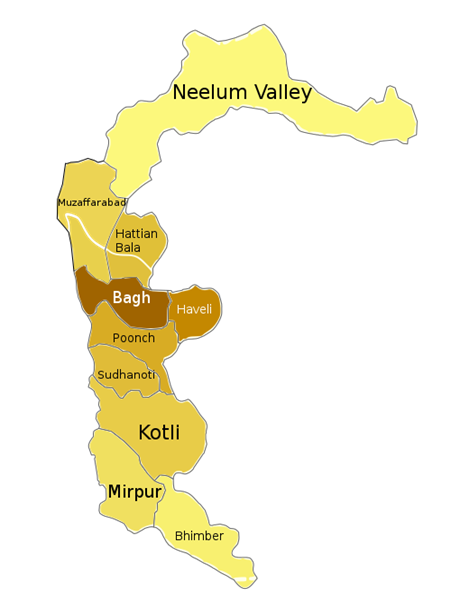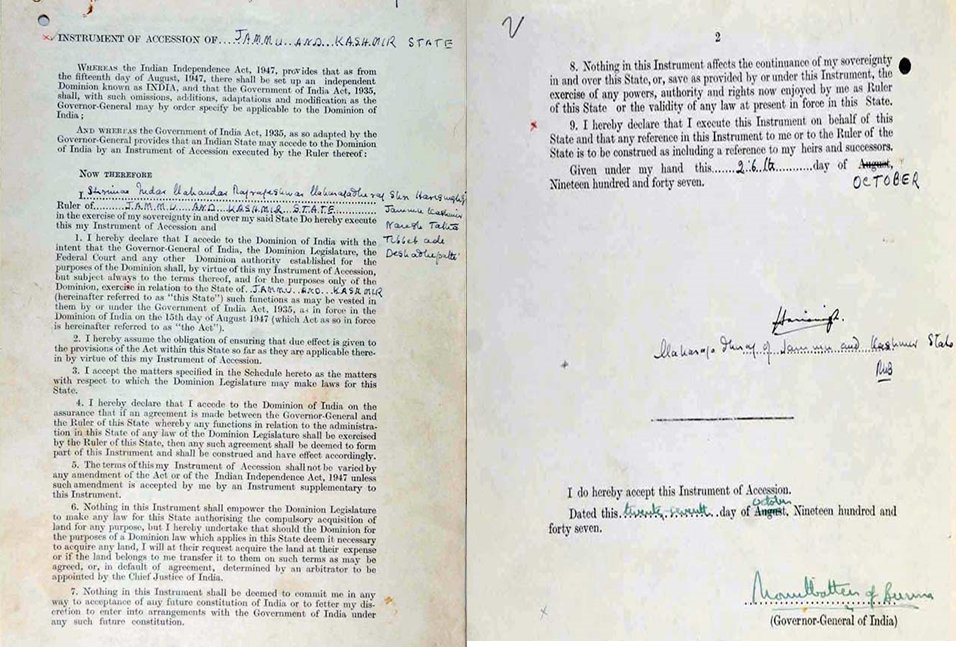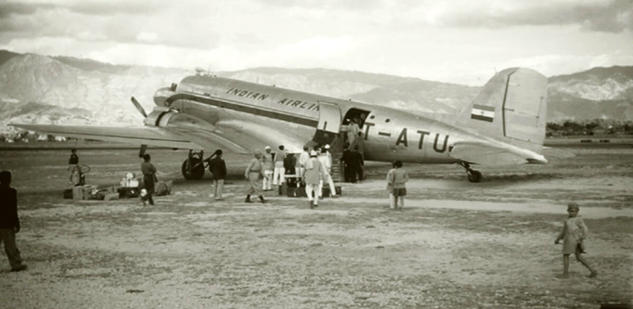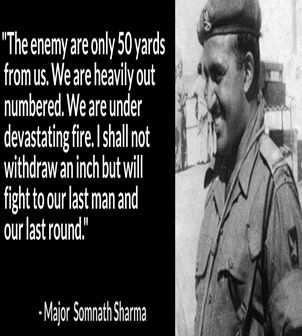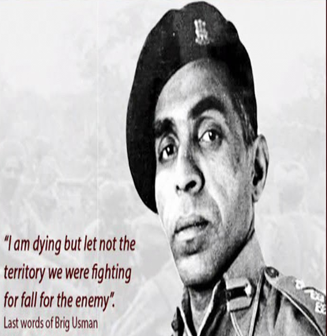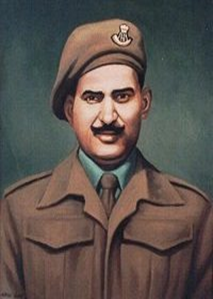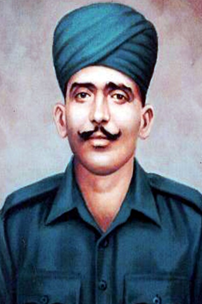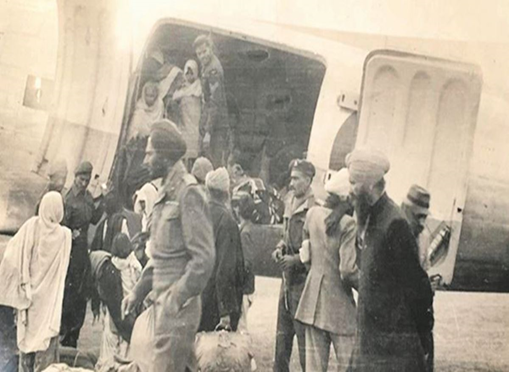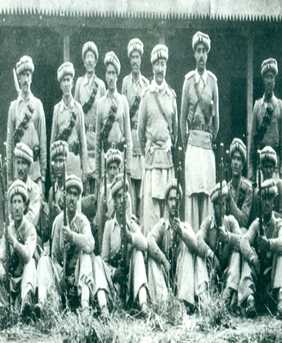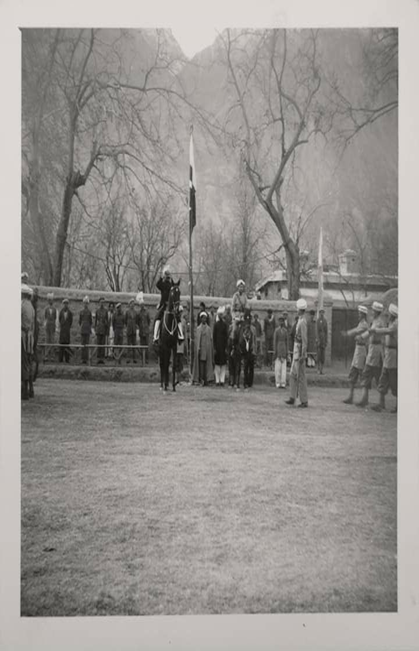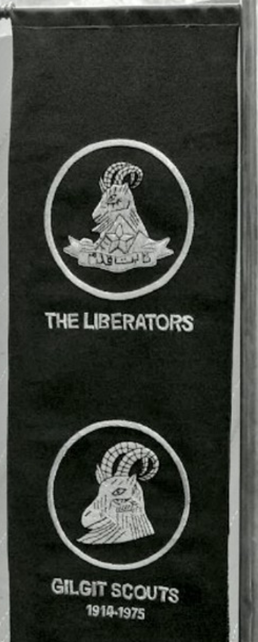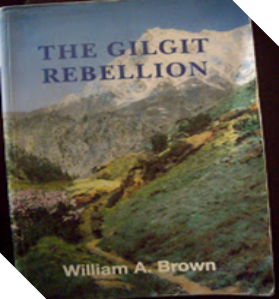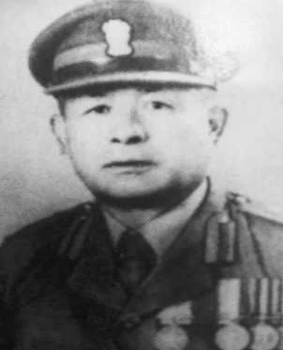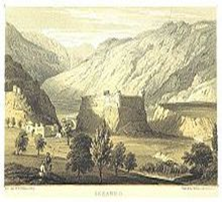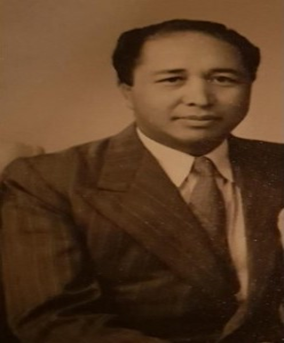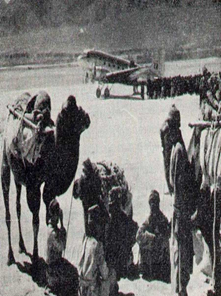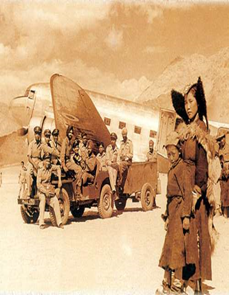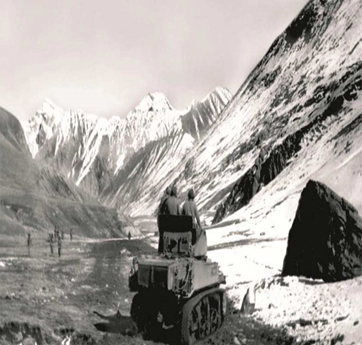Ok folks, so since Gilgit-Baltistan has been in news quite a bit in the past few days and weeks, let me share some perspective on PoJK and Gilgit-Baltistan.
In this thread, I intend talking about a historical perspective to the issue and the legal status of PoJK / GB.
Here goes..
In this thread, I intend talking about a historical perspective to the issue and the legal status of PoJK / GB.
Here goes..
But first, I will share this video of the Prime Minister of India speaking from the Red Fort not very long ago.
Then last year, after the abrogation of Articles 370 and 35A, came these statements from the Home Minister, clearly specifying the territorial limits of Jammu and Kashmir.
Of course, questions were raised by the media here in India, leading to this statement from the Chief of the Army Staff soon thereafter.
Before moving ahead, a quick word on the geography of the area.
Total area of J&K is approx 222,236 sq km.
Area under illegal occupation of Pakistan is about 78114 Sq Km.
Are under Chinese occupation = 47,815sq Km (Including Shaksgam).
India controls 101,437 Sq Km (45%) of J&K.
Total area of J&K is approx 222,236 sq km.
Area under illegal occupation of Pakistan is about 78114 Sq Km.
Are under Chinese occupation = 47,815sq Km (Including Shaksgam).
India controls 101,437 Sq Km (45%) of J&K.
Now coming on to the HISTORY of J&K ..
To begin with, it is important to note that the widespread ignorance about the historical background of Jammu & Kashmir has perpetuated various myths about its evolution
To begin with, it is important to note that the widespread ignorance about the historical background of Jammu & Kashmir has perpetuated various myths about its evolution
The main myths include the beliefs that the princely state of J&K was an artificial entity created by the Dogras, also that the entire region was never a part of the same political dispensation and that G-B always existed as a distinct political entity separate from Ladakh & J&K
There is another belief professed by Pakistan that it was an indigenous movement by the local population that actually led to the separation of Gilgit-Baltistan from the State of Jammu & Kashmir.
All these myths are nothing but Pakistani attempts to merge Gilgit-Baltistan as her Fifth Province, so that international apprehensions on CPEC could be assuaged.
THIS is the bottomline as far as all these issues in highlight over the past few days go.
THIS is the bottomline as far as all these issues in highlight over the past few days go.
Hence this thread.
Let me go about trying to bust these myths created by Pakistan over the past few years and decades.
Let me go about trying to bust these myths created by Pakistan over the past few years and decades.
Both Ladakh & Jammu & Kashmir, have been part of India’s political & cultural domain and spiritual consciousness since the Mahabharat period.
These linkages manifest visibly in the Ganpatyar, Shankaracharya & Kheer Bhavani Temples located in the Kashmir Valley.
These linkages manifest visibly in the Ganpatyar, Shankaracharya & Kheer Bhavani Temples located in the Kashmir Valley.
In the Third Century BC, Emperor Ashoka
introduced Buddhism and the Mahayana School of Buddhism originated in Kashmir. It subsequently attained pre-eminence during the Fourth Buddhist Council held here by Emperor Kanishka in the First Century AD.
introduced Buddhism and the Mahayana School of Buddhism originated in Kashmir. It subsequently attained pre-eminence during the Fourth Buddhist Council held here by Emperor Kanishka in the First Century AD.
Emperor Lalitaditya’s reign from 724 to 760 AD marked the golden age of Kashmir and the Zenith of the Hindu Karkota Empire and the Kashmiri Shaivism.
Islam came in gradually in the 14th Century giving birth to a Sufi tradition of Kashmiriyat, influenced by Muslim saints, one of whom, Sheikh Nuruddin Noorani also known as Nund Rishi, lies laid to rest at Charar-e-Sharif.
Throughout history, ALL the regions of Jammu & Kashmir have been integral parts of the Kashmir Empire and continued so until the Dogra Empire of the nineteenth & the twentieth century.
(Second Pic - Maharaja Gulab Singh)
(Second Pic - Maharaja Gulab Singh)
As a matter of fact, Rinchan, the first Muslim King was a Prince of Ladakh, who was rechristened as Sadruddin Shah (Pic 1) on conversion to Islam & the last major independent Muslim Dynasty that ruled Kashmir – The Chak Dynasty – had migrated from Gilgit.
Pic 2 - Yousuf Shah Chak
Pic 2 - Yousuf Shah Chak
These facts highlight close intra-regional cultural and political connections. Moreover, it goes to prove that the history of the Areas under present Pak Occupied Jammu & Kashmir including Gilgit-Baltistan have an umbilical connection to the history of Kashmir itself.
With Mughals, Kashmir became a province of Delhi Empire in 1540 AD and continued to be ruled by its Governors for 3 centuries. A six decade Afghan rule under the Durranis succeeded the Mughals and thereafter in 1819 AD, Kashmir came under the Sikh Power of Maharaja Ranjit Singh.
It is important to note that the Sikh Rule was initially confined to the Kashmir Valley and the Jammu Region was given to Raja Gulab Singh as a Jagir by Maharaja Ranjit Singh in 1820.
(Illustration - Grant of the Jagir to Raja Gulab Singh)
(Illustration - Grant of the Jagir to Raja Gulab Singh)
After consolidating his position in the Jammu Region, Gulab Singh assisted ably by General Zorawar Singh captured Ladakh & Baltistan by 1840.
On the other hand, Gilgit was captured by Col Nathu Shah for the Sikhs around the same time.
On the other hand, Gilgit was captured by Col Nathu Shah for the Sikhs around the same time.
By this time the 11 peripheral principalities of the state in and around Gilgit-Baltistan, which historically had remained Vassal States to the ruling dispensation at Srinagar became independent of the Central Authority in Srinagar.
Do note Chitral too as part of those!
Do note Chitral too as part of those!
In 1846, Treaty of Lahore was signed after the defeat of the Sikh army at the Battle of Sabraon in the First Anglo - Sikh War. This forced the Sikhs to cede all territories between the Beas & Sutlej and Pay Rs 1 Crore as war indemnity.
(Illustration - Treaty of Lahore)
(Illustration - Treaty of Lahore)
Lal Singh, the then Prime Minister of the Sikhs offered all Hill territories of the Kingdom including Jammu & Kashmir in lieu of the indemnity.
The British then offered to make Raja Gulab Singh the Independent ruler of Jammu & Kashmir provided he paid the indemnity amount.
The British then offered to make Raja Gulab Singh the Independent ruler of Jammu & Kashmir provided he paid the indemnity amount.
Thus, at a reduced amount of Rs 75 Lakhs, the British transferred the territory of Jammu & Kashmir to Raja Gulab Singh at the Treaty of Amritsar.
This treaty made Gulab Singh the absolute ruler of Kashmir and a full-fledged sovereign of Jammu, Kashmir & Ladakh, as well as Gilgit & Baltistan, but like elsewhere Britain retained exclusive authority over Defence, Foreign Affairs & Communications.
Thus, the demographic fabric of the Princely State consisted a Buddhist majority Ladakh, Muslim majority Kashmir, Western Jammu, Gilgit & Baltistan & a Hindu majority Jammu region – stitches that proved to be reasons for Hari Singh’s indecisiveness and the rapid annexation of ..
.. the Western Jammu regions in the subsequent tribal invasion of 1947.
The British, interestingly, encouraged Gulab Singh to spread his political influence in Gilgit – Baltistan, so as to establish a safe buffer state between Russia & British India as by 1866, the entire region had come under the control of the Dogras.
The British Policies towards Kashmir fluctuated with developments in India & Central Asia and were necessitated by a need to prevent the growing Russian influence. They interfered with the Maharaja’s administration on the pretext that the Maharaja was inflicting severe ..
..hardships on his subjects, especially in Gilgit.
Thus, Gilgit Agency was established in 1877 with a nominated British Political agent, who was withdrawn & later reappointed in 1889 in view of the growing Afghan influence in Chitral as well as Russian activities in Central Asia.
Thus, Gilgit Agency was established in 1877 with a nominated British Political agent, who was withdrawn & later reappointed in 1889 in view of the growing Afghan influence in Chitral as well as Russian activities in Central Asia.
However, consequent to the Russian Revolution, British anxieties over the Gilgit region increased & the Maharaja was forced to lease the Gilgit Agency to the British for a period of 60 years with effect from March 1935.
Thus, Gilgit region was divided as the Gilgit Agency and the Gilgit Wazarat (District). The Gilgit Agency, directly under the British rule, included Principalities of Hunza, Nagar, Chitral, Punial, Yasin, Kuh Ghizer, Ishkoman, Chilas, Gor & Darel-Tangir.
Once again, note Chitral!
Once again, note Chitral!
The Gilgit Wazarat retained under the Jammu & Kashmir Darbar, included Gilgit, Astor & Bunji.
As a result, despite being a part of the Maharaja’s territory, a huge portion of Gilgit including the vassal states were under British civil & military administration.
As a result, despite being a part of the Maharaja’s territory, a huge portion of Gilgit including the vassal states were under British civil & military administration.
The announcement of independence forced the British to hand the Gilgit Agency back to the Maharaja in July 1947 - A ploy & an arrangement that would play a major role in the illegal annexation of the Gilgit Agency to Pakistan in 1947.
Hari Singh’s ascension to the throne of Jammu & Kashmir in 1925 coincided with the awakening of mass political consciousness throughout India, which found an echo in Jammu & Kashmir as well.
However, the popular movement in this princely state was directed more at the rule of Dogra dynasty spearheaded by Sheikh Mohammad Abdullah through the All Jammu & Kashmir Muslim Conference.
He rechristened the party All Jammu & Kashmir National Conference indicating his leaning towards the Indian National Congress, thereby foreclosing any collaboration with Jinnah & the Muslim League.
He was later, in favour of accession to India, but on favourable personal terms.
He was later, in favour of accession to India, but on favourable personal terms.
In 1946, ‘Maharaja Quit Kashmir’ movement was launched against the Maharaja by Sheikh Abdullah, leading to his immediate arrest. But the movement gathered enough momentum in the Princely State as India & Pak approached the dawn of independence preceded by a nightmare of partition
At the announcement of partition, the Maharaja was still contemplating on a probable deep-within desire to retain sovereignty.
He sent standstill agreements, each with the two Dominions of India & Pakistan with an intent to temporarily maintain status quo; Pakistan consented but India clearly conveyed ‘No Standstill Agreement without Accession’.
The horrifying events that unfolded after Jinnah’s call for Direct Action, irreversible polarization of people & ghastly communal riots in Indian provinces in the run up to Freedom added greater concerns to an already indecisive Maharaja.
In the end of Aug 1947, a number of Pakistani Nationals infiltrated into Poonch Jagir of the Princely State and began inciting the Muslim Sutti & Sudhan Tribes to launch protests against the Maharaja to force him to join Pakistan.
Spanning from Aug to Oct , these protests turned into a wildfire of killings of minorities and raids on frontier posts of State Forces all along the Western Jammu Region.
Actions by armed & radicalized local groups assisted by 60,000 battle hardened demobilised soldiers, dispersed the State Forces into feeble penny-pockets, thereby preventing cohesive & coordinated counter-actions. https://twitter.com/CestMoiz/status/1217492472638529536">https://twitter.com/CestMoiz/...
Sudhan Separatist Leaders, Sardar Ibrahim Khan & Sardar Abdul Qayyum Khan masterminded these vicious actions and overtly collaborated with the Muslim League & Pakistan Army earning epithets of ‘Ghazi-e-Millat’ & ‘Mujahid-e-Awwal’ respectively.
On 21/22 Oct 1947, Pakistan unleashed OP GULMARG spearheaded by a notion of Jihad and radicalised Pashtun Tribal Lashkars led by Pakistani Officers.
Muzaffarabad, Uri & Baramulla were attacked.
Muzaffarabad, Uri & Baramulla were attacked.
Maharaj Hari Singh dispatched Brig Rajendra Singh, his Army Chief towards Uri to contest the raiders.
Brig Rajendra Singh, along with his handful of men, despite being outnumbered, fought a successful battle along Uri- Baramulla road, before he was martyred at Buniyar.
Brig Rajendra Singh, along with his handful of men, despite being outnumbered, fought a successful battle along Uri- Baramulla road, before he was martyred at Buniyar.
He was awarded India’s First MVC for a decisive action of delaying the raiders. By 25 Oct 1947, the raiders reached Baramulla and stalled there to let loose barbaric acts of loot, plunder, savagery & rape, thereby, in a way, delaying their attack on Srinagar.
The J & K State Forces saw large scale desertions & defections in the Western & Northern frontier districts, which led to negligible or weak defence of border towns. Moreover, reinforcements did not reach in time except for Poonch & Kotli, which held out initially.
Owing to the mass defections & desertions Kotli, Muzaffrabad, Bhimber, Rajauri & Mirpur fell early & easily. On 24 Oct 1947, Sardar Ibrahim Khan declared Bhimber, Kotli, Mirpur & Muzaffarabad independent as ‘Azad Kashmir’ and himself came to be known as ‘Bani-e-Kashmir’.
These Western Districts forcefully occupied by Pakistan owing to deceit, defections and treachery, today constitute the 10 districts of the PoK.
In order to salvage the deteriorating situation, Hari Singh approached India for help and on 26 Oct 1947 signed the Instrument of Accession to accede to India. Indian forces landed in Srinagar on 27 Oct 1947 to push back the intruders.
The ensuing battles in the region for the next 14 Months is a heroic saga of recapture of territory, highlighting ingenuity & perseverance, preceded and succeeded by iconic defensive battles.
The Battles of Budgam, Jhangar, Naushera, Rajauri, Tithwal & Zojila stand out as a sterling testimony of the Indian Military character in its nascent days itself.
Poonch Town, besieged in Nov 1947, remained so for almost over an year. The bravery & steely resolve displayed by Lt Col Pritam Singh, alias ‘Sher Bachcha’ & Air Commodore Mehar Singh alias ‘Mehar Baba’ prevented its fall against all odds.
Op Easy launched by the Jammu Division for linking up Poonch via Rajouri, finally relieved it on 20 Nov 1948.
Now coming over to Gilgit-Baltistan.
With the lapse of paramountcy in Aug 1947, Brigadier Ghansara Singh was made the Governor of Gilgit on premature British termination of the lease of Gilgit.
With the lapse of paramountcy in Aug 1947, Brigadier Ghansara Singh was made the Governor of Gilgit on premature British termination of the lease of Gilgit.
The region had at that time, one State Forces Battalion & 500 troops of Gilgit Scouts commanded by Maj William Alexander Brown. Muslim officers & troops of the State Forces and the Gilgit Scouts established contact with Maj William Brown to establish Pakistani Rule in Gilgit.
However, all the Rajas of the region professed loyalty to Maharaja Hari Singh except the Mehtar of Chitral.
On accession of Kashmir to India, there was a pandemonium in Gilgit and on 01 Nov, Ghansara Singh was arrested by the troops of Gilgit Scouts leading to the disintegration of the State Forces which resulted in massive killing of non-muslim comrades by Muslim troops ..
.. of the State Forces Battalion & Gilgit Scouts.
On 04 Nov 1947, Pakistani flag was hoisted by Maj William Brown at the Gilgit Scouts lines & Peshawar was informed of Gilgit’s accession to Pakistan along with principalities of Hunza & Nagar.
On 04 Nov 1947, Pakistani flag was hoisted by Maj William Brown at the Gilgit Scouts lines & Peshawar was informed of Gilgit’s accession to Pakistan along with principalities of Hunza & Nagar.
Justifying his actions under a clandestine operation called OP DATTAKHEL, as ‘Coup-de-Etat’, he had remarked, “My actions appeared to possess all the elements of high treason, yet I know in my own mind that what I had done was right”, unquote.
From Indian point of view, Maj Brown’s action indicated British complicity, various conspiracy theories and Pakistani-British connivance, which surely gets substantiated by him being awarded the Sitara-e-Imtiaz, the third highest civilian award in Pakistan, posthumously in 1993.
By the end of Nov 1947, Pakistan was in complete control of Gilgit, paving way for incursions into Baltistan. However, the onset of winters prevented immediate action.
In the meanwhile, Lt Col Sher Jung Thapa of the State Forces took up defences at Tsari, 20 Miles North West of Skardu.
Tsari was attacked and overrun on 8/9 Feb 1948 and Skardu was beseiged on 14 February 1948 which continued until 14 Aug 1948, a total of 185 days.
Tsari was attacked and overrun on 8/9 Feb 1948 and Skardu was beseiged on 14 February 1948 which continued until 14 Aug 1948, a total of 185 days.
Skardu fell only when it ran out of ammo, but the heroic & determined stand of Sher Jung Thapa & his men at Skardu delayed the operations of the raiders towards Kargil & Leh.
The raiders in the meantime had bypassed Skardu & took control of Kargil, Dras & Zojila Pass – threatening Leh.
Leh could only be saved by air landing troops on a newly constructed airstrip by Sonam Norbu, a local engineer.
Leh could only be saved by air landing troops on a newly constructed airstrip by Sonam Norbu, a local engineer.
Subsequently, Operation Bison led to the recapture of Zojila & Kargil prior to ceasefire on 31 Dec 1948.
Seeing the geographic proximity of areas & alignment of the CFL, many questions are raised that seek an answer even today, that why this pursuit of raiders was left incomplete?
However, whatever be the reason, fact remains that history can no longer be changed, though no one knows what the future might hold!
Time for a dinner break now.
Need to fill up before the Ekadashi fast tomorrow!
Will tweet about the legal status of PoJK, including G-B in the morning.
Need to fill up before the Ekadashi fast tomorrow!
Will tweet about the legal status of PoJK, including G-B in the morning.
Plugging this thread on the legal aspects of the Kashmir issue here, for the sake of continuity https://twitter.com/CestMoiz/status/1310072362302398465">https://twitter.com/CestMoiz/...
^^
Above thread in my blog https://twitter.com/CestMoiz/status/1310111786348285953">https://twitter.com/CestMoiz/...
Above thread in my blog https://twitter.com/CestMoiz/status/1310111786348285953">https://twitter.com/CestMoiz/...

 Read on Twitter
Read on Twitter